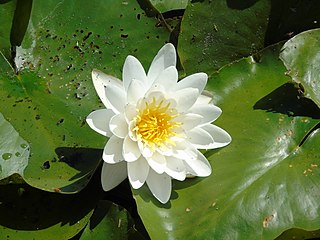Classification
Darlingtonia californica is a eudicot. Nuphar and Nymphaea are genera in the Nymphaeaceae family of order Nymphaeales, and are basal angiosperms. All other plants listed here are monocots.
Lily usually refers to herbaceous plants of the genus Lilium , with large showy trumpet-shaped flowers. Many species are cultivated as ornamentals.
Many other plants not closely related to lilies are called lilies, usually because their flowers resemble lilies. They include:
Darlingtonia californica is a eudicot. Nuphar and Nymphaea are genera in the Nymphaeaceae family of order Nymphaeales, and are basal angiosperms. All other plants listed here are monocots.

Narcissus is a genus of predominantly spring flowering perennial plants of the amaryllis family, Amaryllidaceae. Various common names including daffodil, narcissus and jonquil, are used to describe all or some members of the genus. Narcissus has conspicuous flowers with six petal-like tepals surmounted by a cup- or trumpet-shaped corona. The flowers are generally white and yellow, with either uniform or contrasting coloured tepals and corona.

Nymphaea is a genus of hardy and tender aquatic plants in the family Nymphaeaceae. The genus has a cosmopolitan distribution. Many species are cultivated as ornamental plants, and many cultivars have been bred. Some taxa occur as introduced species where they are not native, and some are weeds. Plants of the genus are known commonly as water lilies, or waterlilies in the United Kingdom. The genus name is from the Greek νυμφαία, nymphaia and the Latin nymphaea, which mean "water lily" and were inspired by the nymphs of Greek and Latin mythology.
Swamp lily can refer to plants:
The Koninklijke Algemeene Vereniging voor Bloembollencultuur, translated from Dutch as the Royal General Association for Bulb Culture, but more commonly known world-wide by the acronym of KAVB, is a trade association for the bulb horticulture sector, and was established in 1860. The association has a rural organization, within which regional groups and departments are active.

Ornamental bulbous plants, often called ornamental bulbs or just bulbs in gardening and horticulture, are herbaceous perennials grown for ornamental purposes, which have underground or near ground storage organs. Botanists distinguish between true bulbs, corms, rhizomes, tubers and tuberous roots, any of which may be termed "bulbs" in horticulture. Bulb species usually lose their upper parts during adverse conditions such as summer drought and heat or winter cold. The bulb's storage organs contain moisture and nutrients that are used to survive these adverse conditions in a dormant state. When conditions become favourable the reserves sustain a new growth cycle. In addition, bulbs permit vegetative or asexual multiplication in these species. Ornamental bulbs are used in parks and gardens and as cut flowers.

Brithys crini, the amaryllis borer, crinum borer, lily borer or Kew arches, is a moth of the family Noctuidae. It is a garden pest in parts of its range, as their larvae damage the stems and leaves of lilies, especially lilies of the family Amaryllidaceae.

Nerine bowdenii is a species of flowering plant in the family Amaryllidaceae. It is an herbaceous bulbous perennial, growing to 45 cm (18 in) tall by 8 cm (3 in), with strap-shaped leaves and large umbels of lily-like pink flowers in late summer and autumn. The common names of the species are Cornish lily, Cape flower, Guernsey lily, and Bowden lily. However, it is neither a true lily nor from Cornwall or Guernsey, but originates from South Africa. Confusingly the name “Guernsey lily” is also applied to a related species, Nerine sarniensis.

Bronte House is a heritage-listed historic house and visitor attraction located at 470 Bronte Road, Bronte, Waverley Municipality, New South Wales, Australia. Built in the Australian Gothic Revival style, the house was designed by Georgiana & Robert Lowe and Mortimer Lewis and built from 1843 to 1845. It is also known as Bronte estate. The property is owned by Waverley Municipal Council and was added to the New South Wales State Heritage Register on 2 April 1999 and is listed on the Register of the National Estate.

Blue lily may refer to the following plant species:

Crinine in an alkaloid found in a variety of plants including many species in the family Amaryllidaceae. It was first isolated and characterized in the 1950s as a constituent of several plants in the genus Crinum, from which it derives its name.